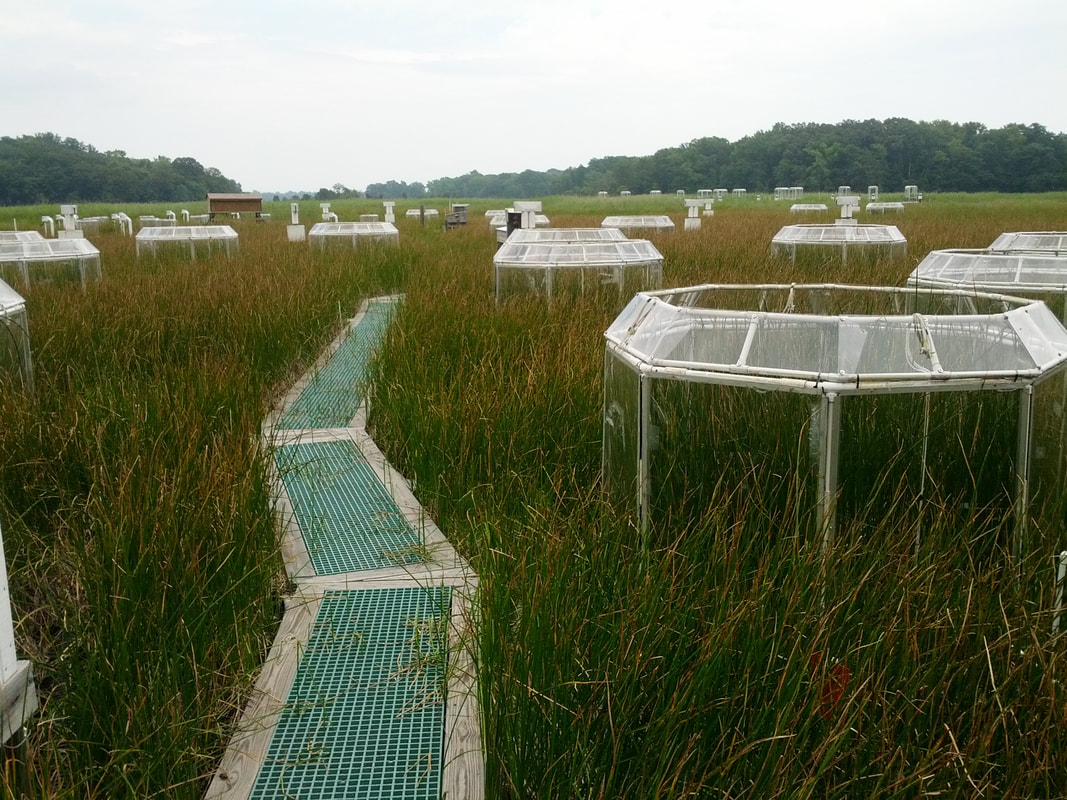Will global changes affect whether brackish marshes act as sources or sinks of greenhouse gases?
|
Marshes can store vast amounts of carbon. These ecosystems are characterized by waterlogged soils, which cause slow decomposition of plant matter. This means that carbon sequestered by plants may be stored belowground for very long periods of time. Because this slows carbon release as CO2, it is a very important ecosystem service. However, marshes release other greenhouse gases besides CO2. The waterlogged environment of marshes is favorable for production of methane (CH4) and nitrous oxide (N2O), both of which are very potent greenhouse gases. I balanced greenhouse gas emissions against carbon storage in a brackish marsh along the Chesapeake Bay under four scenarios: (1) ambient conditions, (2) increased nitrogen supply, (3) elevated CO2, and (4) increased nitrogen supply + elevated CO2.
I found that nitrogen addition increased the capacity of the marsh to act as a greenhouse sink, despite a stimulation in N2O emissions, by enhancing carbon storage. Elevated CO2, however, had the opposite effect and turned the marsh into a greenhouse source by enhancing CH4 emissions. |
|


